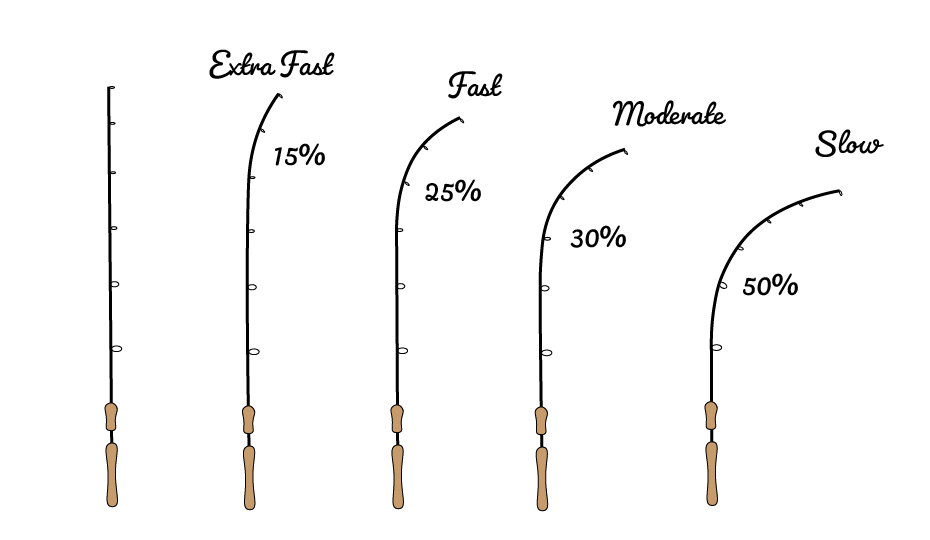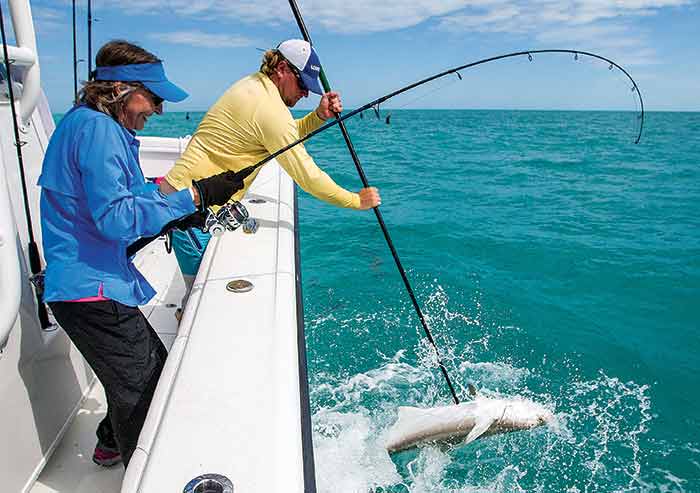Fishing is a relaxing and rewarding activity that many people enjoy. Whether you are a seasoned angler or a beginner, having the right fishing rod is essential for a successful and enjoyable fishing experience. But with so many different types of fishing rods available on the market, how do you know which one to choose? In this article, we will provide you with useful tips and guidance on how to pick a fishing rod that is perfect for your needs.
Firstly, it is important to understand the different types of fishing rods available. From spinning rods to casting rods and fly rods, each type has its own unique features and benefits. The type of fishing rod you choose will depend on factors such as the type of fish you are targeting, the location where you will be fishing, and your personal preferences. By understanding these factors and doing your research, you can choose a fishing rod that is best suited for your needs and will help you achieve your fishing goals.
Choosing the right fishing rod depends on several factors, such as the species of fish, the water conditions, and your budget. Here are some steps to help you pick the right rod:
- Determine the type of fish you want to catch and the fishing technique you’ll use.
- Consider the rod’s length, power, and action to match your fishing style and target species.
- Decide on the material, such as graphite, fiberglass, or composite, depending on your budget and preferences.
- Test the rod’s weight and balance to ensure comfortable use and control.
- Buy from a reputable brand and shop for good deals to maximize value.

How to Pick a Fishing Rod?
Fishing is one of the popular outdoor activities that can help you relax and unwind. It is essential to have the right gear and equipment to make your fishing experience more enjoyable. One of the essential items to consider is a fishing rod. Choosing a fishing rod can be confusing because of the variety available in the market. In this article, we will provide you with detailed information on how to pick the right fishing rod for you.
Understanding the Types of Fishing Rods
Before choosing a fishing rod, it is essential to understand the different types available. There are four main types of fishing rods, including spinning rods, baitcasting rods, fly rods, and ice fishing rods. Spinning rods are the most common and versatile type, suitable for beginners and experienced anglers. Baitcasting rods are more advanced and suitable for experienced anglers. Fly rods are used for fly fishing, and ice fishing rods are used for fishing in ice-covered waters.
When choosing a fishing rod, you should consider the type of fishing you plan to do. For example, if you plan to fish in freshwater, a spinning rod will be suitable. However, if you plan to fish in saltwater, a saltwater spinning rod will be more appropriate.
Choosing the Right Length and Power
The length and power of a fishing rod are essential factors to consider when choosing a fishing rod. The length of a fishing rod ranges from 4 feet to 14 feet. A longer fishing rod casts farther, while a shorter fishing rod is more accurate. For beginners, a medium-sized rod of around 6 to 7 feet is recommended.
The power of a fishing rod refers to its strength and ability to handle different types of fish. It ranges from ultralight to heavy. Ultralight power rods are suitable for catching small fish, while heavy power rods are suitable for catching large fish. For beginners, a medium power rod is recommended.
Choosing the Right Material
Fishing rods are made from different materials, including graphite, fiberglass, and composite materials. Graphite rods are lightweight and sensitive, while fiberglass rods are more durable and suitable for beginners. Composite materials are a combination of both graphite and fiberglass, making them more durable and sensitive.
When choosing a fishing rod, you should consider the material you prefer. If you plan to fish in freshwater, a graphite rod will be suitable. However, if you plan to fish in saltwater, a fiberglass or composite rod will be more appropriate.
Factors to Consider When Choosing a Fishing Reel
When choosing a fishing rod, you should also consider the type of fishing reel you plan to use. There are three main types of fishing reels, including spinning reels, baitcasting reels, and spincast reels. Spinning reels are the most common and suitable for beginners. Baitcasting reels are more advanced and suitable for experienced anglers. Spincast reels are simple to use and suitable for beginners and children.
Choosing the Right Size and Gear Ratio
The size and gear ratio of a fishing reel are essential factors to consider when choosing a fishing reel. The size of a fishing reel is determined by its spool size and is indicated by a number. The higher the number, the larger the spool size. The gear ratio refers to the number of times the spool rotates for each turn of the handle. A higher gear ratio allows for a faster retrieve.
When choosing a fishing reel, you should consider the size and gear ratio that matches your fishing rod. For example, a size 1000 or 2000 reel with a gear ratio of 5.2:1 will be suitable for a 6 to 7-foot fishing rod.
Choosing the Right Drag System
The drag system of a fishing reel is essential for controlling the tension on the fishing line. It is important to choose a fishing reel with a drag system that matches the type of fish you plan to catch. The drag system should be smooth and easy to adjust.
When choosing a fishing reel, you should consider the type of fishing you plan to do and the size of the fish you plan to catch. For example, if you plan to catch large fish, a fishing reel with a strong drag system will be suitable.
Conclusion
Choosing the right fishing rod and reel can make a significant difference in your fishing experience. By considering the factors discussed in this article, you can pick the right fishing rod and reel that matches your needs and preferences. Remember to choose a fishing rod and reel that is comfortable to use and suits your skill level. Happy fishing!
Freequently Asked Questions
Choosing the right fishing rod can be overwhelming, especially for beginners. Here are some frequently asked questions to help you pick the right fishing rod for your needs.
What type of fish are you targeting?
The type of fish you’re targeting plays a crucial role in selecting the right fishing rod. For example, if you’re targeting smaller fish like trout, a light or ultralight rod would be ideal. On the other hand, if you’re targeting larger fish like salmon or bass, a medium to heavy rod may be more appropriate.
Additionally, consider the fishing technique you’ll be using. If you’ll be casting lures, a fast or extra-fast action rod would be best, while a slow or moderate action rod would be better for bait fishing or trolling.
What is the rod material?
Fishing rods are typically made of graphite, fiberglass, or a combination of both. Graphite rods are more sensitive and lightweight, making them ideal for casting and feeling subtle bites. Fiberglass rods, on the other hand, are more durable and can handle heavier fish or rough waters.
If you’re a beginner or on a budget, a fiberglass rod may be a more affordable option. However, if you’re an experienced angler or looking for more sensitivity, a graphite rod would be a better choice.
What is the ideal rod length?
The ideal rod length depends on your fishing location, target species, and personal preference. Shorter rods (less than 6 feet) are ideal for small streams or tight spaces, while longer rods (over 8 feet) are better for surfcasting or fishing from a boat.
For general freshwater or inshore saltwater fishing, a 6 to 7-foot rod would suffice. However, if you’re targeting larger fish or fishing in deeper waters, a longer rod may be necessary.
What is the right power and action?
The power of a fishing rod refers to its strength or lifting power, while the action refers to the flexibility or bend of the rod. Rod power is rated from ultralight to heavy, with ultralight being the lightest and heavy being the strongest.
The rod action is rated from slow to fast, with slow being the most flexible and fast being the least flexible. A fast action rod would be ideal for casting lures, while a slower action rod would be better for bait fishing or trolling.
What is the ideal handle type?
The handle of a fishing rod should feel comfortable and provide a good grip. The most common handle materials are cork and EVA foam. Cork handles are more durable and provide a better grip, while EVA foam handles are softer and more comfortable to hold.
The handle length also varies, with longer handles providing more leverage and shorter handles providing more accuracy. Consider your personal preference and the type of fishing you’ll be doing to select the ideal handle type and length.
Bass Fishing for Beginners – How to Choose a Fishing Rod – How to Fish
In conclusion, picking the right fishing rod can make or break your fishing experience. It is important to consider factors such as the type of fish you are targeting, the body of water you are fishing in, and your personal preferences. By taking the time to research and try out different rods, you can find the perfect fit for your needs.
Remember, a good fishing rod is an investment that will last you for years to come. Don’t be afraid to spend a little extra money on a high-quality rod that will improve your chances of catching fish and enhance your overall fishing experience. With these tips and a little bit of practice, you’ll be well on your way to becoming a skilled angler.

